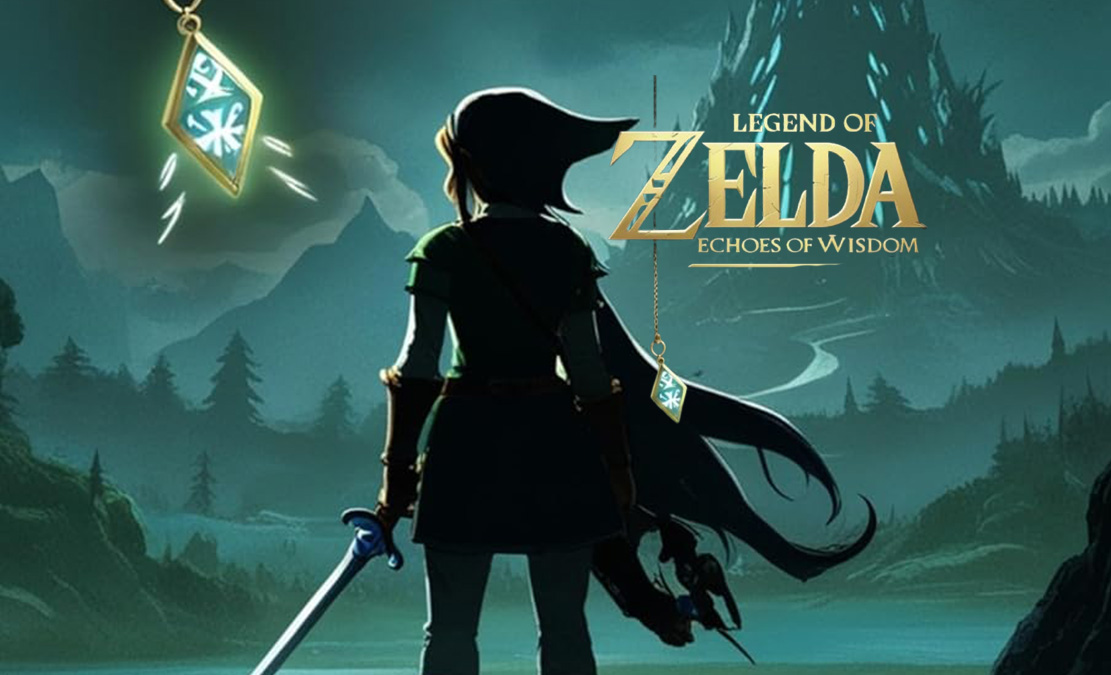The Legend of Zelda: Echoes of Wisdom delivers a unique take on the beloved franchise by placing Zelda herself at the center of the adventure. With an intriguing new gameplay mechanic, the Echo System, and a story filled with fresh puzzles and magical twists, this game blends the old and the new to give long-time fans and newcomers alike something to explore. But how does this change in approach fare overall? Let’s dive into the key elements of this innovative title and see where it shines, and where it stumbles.
For fans of the Zelda franchise, the idea of Zelda taking the reins instead of Link is nothing short of exciting. Gone are the days when she simply played the role of the damsel in distress. In Echoes of Wisdom, Zelda embarks on a magical journey to save a fractured Hyrule. Armed with the Triwand, a mystical artifact that allows her to summon echoes of objects and enemies, Zelda uses her wit rather than brute strength to solve puzzles and defeat enemies.
Before we get into the gameplay, let’s break down what makes this installment both a throwback and a fresh take. This review will cover everything from the story, world design, and innovative gameplay to challenges and overall impressions.
Key Takeaways
| Feature | Details |
|---|---|
| Protagonist | Zelda |
| Main Mechanic | Echo System (Summoning echoes of objects) |
| World Design | Fragmented Hyrule & Still World |
| Combat Style | Strategic, puzzle-based |
| Art Style | Toy-like, reminiscent of Link’s Awakening |
Story and Setting
The game’s story takes us back to a familiar yet disjointed version of Hyrule, where Zelda must navigate between the real world and the enigmatic Still World. Unlike previous installments, where Link is the hero, this time it’s Zelda who must restore balance after Link is sucked into a series of mysterious purple rifts.
The dual-reality gameplay adds depth to exploration. The Still World, similar to Pokémon Platinum’s Distortion World, presents players with unique challenges in a fragmented, almost dreamlike landscape. Zelda interacts with characters and environments in both realities, solving puzzles that require her to travel between these two worlds to progress. The introduction of a parallel dimension adds a complex layer of storytelling, making the narrative richer than a straightforward quest to defeat Ganon.
Gameplay Mechanics
At the heart of The Legend of Zelda: Echoes of Wisdom is the Echo System, which fundamentally changes how the game is played. Instead of the traditional sword-and-shield combat of Link, Zelda’s gameplay revolves around strategy and puzzle-solving through the use of echoes.
The Echo System
Zelda’s Triwand allows her to copy objects and summon their echoes to aid in her journey. Whether it’s stacking tables to create a makeshift ladder or summoning rocks to throw at enemies, the Triwand offers a vast array of possibilities. This gives players the freedom to be creative in solving environmental puzzles. Here are some notable uses of the Echo System:
- Traversal: Stacking objects like furniture to reach high places.
- Combat: Summoning the echoes of defeated enemies to fight for Zelda.
- Puzzle-solving: Using echoes to manipulate objects and platforms in both the real world and the Still World.
Combat System
Zelda isn’t as combat-heavy as Link. Instead of relying on brute force, combat is more about timing and strategy. The Swordfighter form, a special ability that lets Zelda transform into a spectral Link wielding a sword, provides short bursts of power for difficult boss battles. However, this form drains energy quickly, requiring players to reserve it for key moments.
Exploration and World Design
The world of Echoes of Wisdom is both familiar and refreshing. The main areas—Goron Volcanoes, Gerudo Desert, and Zora Underwater Realms—are beautifully designed, each with its own set of challenges. The toy-like aesthetic from Grezzo’s work on the Link’s Awakening remake makes a return, lending the game a whimsical and approachable feel.
Exploration is enhanced by fast travel and a variety of ways to traverse the world, including horse rentals and flying on summoned creatures like birds. These features make the game feel expansive, while still accessible.
Side Quests and Mini-Games
In addition to the main quest, Echoes of Wisdom is filled with side quests, cooking challenges, and mini-games that provide both fun diversions and useful upgrades. Players can collect items to blend smoothies, upgrade their weapons, or find hidden treasures scattered across Hyrule.
Puzzles and Dungeons
Puzzles are where Echoes of Wisdom truly shines. Each dungeon presents players with creative challenges that make full use of Zelda’s Echo System and the Triwand’s abilities. Whether it’s manipulating objects, moving platforms, or solving intricate lock-and-key puzzles, the gameplay feels both nostalgic and innovative.
What makes this entry stand out is the freedom to approach puzzles in multiple ways. Unlike traditional Zelda games where a specific item is the solution, here you can combine different echoes to create unique solutions. For example, you can bind to large objects or summon creatures to assist with complex tasks.
Art Style and Performance
The art style of Echoes of Wisdom is one of its most charming features. Drawing inspiration from the Link’s Awakening remake, the characters are rendered in a chunky, toy-like aesthetic, which fits the game’s whimsical tone perfectly. The environments are richly detailed, and each area feels distinct, from the desert sands of Gerudo to the lush forests of the Lost Woods.
Performance, however, can be a mixed bag. While the game generally runs smoothly, there are moments when frame rates dip, especially during busy combat sequences or in areas with a lot of echoes active on-screen. These performance issues are not game-breaking, but they do slightly detract from the experience.
Challenges and Criticisms
Like any game, Echoes of Wisdom isn’t without its flaws. The Echo System, while innovative, can feel clunky at times. The UI for selecting echoes is organized in a long horizontal list, making it difficult to quickly choose the right echo in the heat of battle. Additionally, combat can feel chaotic and unintuitive, with Zelda often relying more on summoned creatures than direct engagement.
Another issue is the game’s difficulty curve. Some sections feel a bit too easy, especially with the generous energy regeneration during boss battles, while other areas can be frustrating due to the slow controls or awkward UI.
Final Thoughts
The Legend of Zelda: Echoes of Wisdom is a magical adventure that stands out for its creativity and bold departure from the traditional Zelda formula. By placing Zelda at the forefront, the game offers a fresh take on combat and exploration while staying true to the franchise’s roots. Despite some UI and performance issues, the game’s inventive puzzle mechanics and charming world design make it a must-play for fans of the series.
In conclusion, if you’re looking for a Zelda game that blends nostalgia with new, strategic gameplay, Echoes of Wisdom is a great choice. While it may not have the same combat intensity as Breath of the Wild, its focus on puzzles and creativity will keep you entertained throughout your journey.

